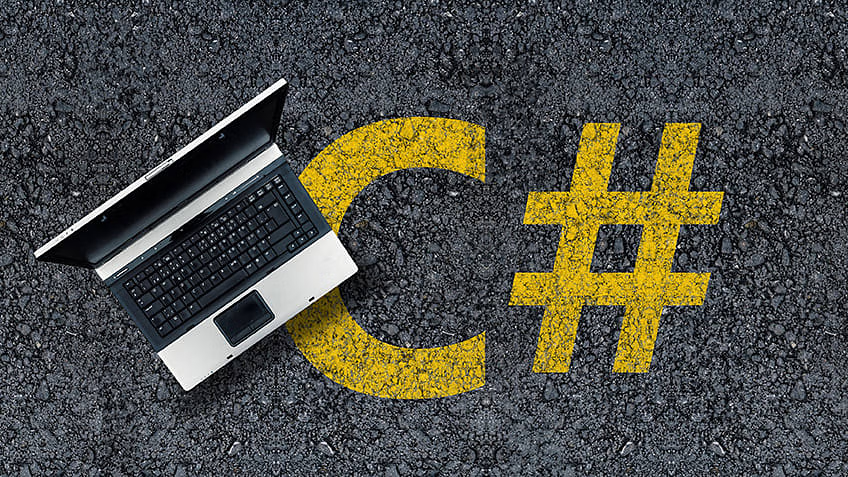C# for Beginners: A Comprehensive Guide
 Dalip kumar
Dalip kumar
Introduction
Welcome to the world of C#! In this guide, we'll delve into the basics of C# programming language, catering specifically to beginners. Whether you're a budding developer or simply curious about coding, this article will equip you with the essential knowledge to kickstart your journey into C# programming.
What is C#?
C# is a powerful and versatile programming language developed by Microsoft. It is widely used for developing various types of applications, including web applications, desktop software, games, and mobile apps. Known for its simplicity and readability, C# is an excellent choice for beginners entering the world of programming.
Why Learn C#?
Learning C# opens up a plethora of opportunities in the software development industry. It's in high demand, with numerous job opportunities available for proficient C# developers. Additionally, mastering C# lays a solid foundation for learning other languages like Java and C++.
Getting Started with C#
Installing Visual Studio
Before diving into C# programming, you'll need to set up your development environment. The preferred IDE for C# development is Visual Studio, which you can download and install from the official Microsoft website.
Setting Up Your First C# Project
Once Visual Studio is installed, you can create your first C# project. Launch Visual Studio, select "Create a new project," choose the appropriate project template (e.g., Console Application), and follow the prompts to create your project.
Basic Syntax and Variables
Understanding the syntax of C# is fundamental to writing code effectively. C# syntax is similar to other C-style languages, making it relatively easy to grasp for beginners. We'll cover essential syntax elements such as declaring variables and data types.
Understanding Syntax Basics
C# syntax follows a set of rules governing the structure and composition of code. These rules dictate how code is written and interpreted by the compiler. Key syntax elements include statements, expressions, and punctuation marks.
Declaring Variables and Data Types
Variables are used to store data in a program temporarily. In C#, variables must be declared with a specific data type, indicating the kind of data they can hold. Common data types include integers, strings, and booleans.
Control Flow and Loops
Control flow statements allow you to control the execution flow of your program based on certain conditions. Loops are essential for repeating a block of code multiple times, making them invaluable for tasks that require iteration.
Conditional Statements
Conditional statements, such as if-else and switch-case, enable you to execute different blocks of code based on specific conditions. These statements allow for branching behavior in your programs, enhancing their flexibility and usefulness.
Iterative Loops
Iterative loops, such as for, while, and do-while loops, allow you to repeat a block of code multiple times until a certain condition is met. These loops are instrumental in performing repetitive tasks efficiently.
Functions and Methods
Functions and methods are reusable blocks of code that perform a specific task. They allow you to modularize your code, making it easier to manage and debug. Understanding how to define and use functions is crucial for writing clean and maintainable code.
Defining Functions
In C#, functions are declared using the void keyword followed by the function name and parameters, if any. You can then call these functions from other parts of your code to execute their functionality.
Passing Parameters
Parameters allow you to pass data to functions, enabling them to perform operations on different sets of data. Parameters can be of various types, including integers, strings, arrays, and custom objects.
Object-Oriented Programming in C#
Object-oriented programming (OOP) is a programming paradigm that revolves around the concept of objects. In C#, OOP principles are heavily utilized, making it essential for every aspiring C# developer to grasp these concepts.
Classes and Objects
Classes are the building blocks of object-oriented programming in C#. They encapsulate data and behavior into a single unit, allowing for modular and organized code. Objects are instances of classes, representing specific entities in your program.
Inheritance and Polymorphism
Inheritance is a powerful feature of OOP that allows you to create new classes based on existing ones. It promotes code reuse and enables you to create hierarchies of related classes. Polymorphism allows objects of different types to be treated as objects of a common base type, providing flexibility and extensibility.
Exception Handling
Exception handling is the process of gracefully managing errors and unexpected situations in your code. By handling exceptions properly, you can prevent your program from crashing and provide a better user experience.
Handling Errors Gracefully
In C#, exceptions are thrown when errors occur during program execution. You can use try-catch blocks to catch and handle these exceptions, allowing your program to recover from errors and continue running.
Try-Catch Blocks
Try-catch blocks consist of a try block, where you place the code that might throw an exception, and one or more catch blocks, where you handle the exceptions thrown by the try block. This mechanism ensures that your program can handle errors without crashing.
File Handling and Input/Output Operations
File handling is essential for reading from and writing to files on your computer. Input/output (I/O) operations allow your program to interact with the user, reading input from the keyboard and displaying output to the screen.
Reading and Writing Files
C# provides various classes and methods for reading from and writing to files. You can use these classes to perform operations such as reading text files, writing data to files, and manipulating file streams.
User Input and Output
Console input/output is a common way to interact with the user in C# console applications. You can use methods like Console.ReadLine() to read input from the user and Console.WriteLine() to display output to the console.
Resources
"C# Programming Guide" by Microsoft: This official guide provides comprehensive documentation and examples for learning C# programming. Link
"Head First C#" by Andrew Stellman and Jennifer Greene: This book offers a beginner-friendly approach to learning C# with engaging visuals and exercises. Link
"C# 9.0 in a Nutshell" by Joseph Albahari and Ben Albahari: A comprehensive reference book covering all aspects of C# programming, from basics to advanced topics. Link
Subscribe to my newsletter
Read articles from Dalip kumar directly inside your inbox. Subscribe to the newsletter, and don't miss out.
Written by

Dalip kumar
Dalip kumar
I'm Dalip Kumar, a dedicated student and fervent tech aficionado deeply immersed in the world of web development. With an unwavering belief in the power of technology to solve real-world challenges, I embark on a journey to craft innovative solutions and make a meaningful impact. Driven by a relentless curiosity and a thirst for knowledge, I am constantly honing my skills and exploring emerging technologies to stay at the forefront of this dynamic field. I thrive in environments that foster collaboration, creativity, and continuous learning, and I am eager to connect with fellow enthusiasts who share my passion for leveraging technology for the greater good. My mission is simple to forge connections with like-minded individuals who are equally committed to making a positive difference through tech-driven solutions. Together, let's embark on a journey of growth, empowerment, and shared success as we strive to create a better, more connected world.